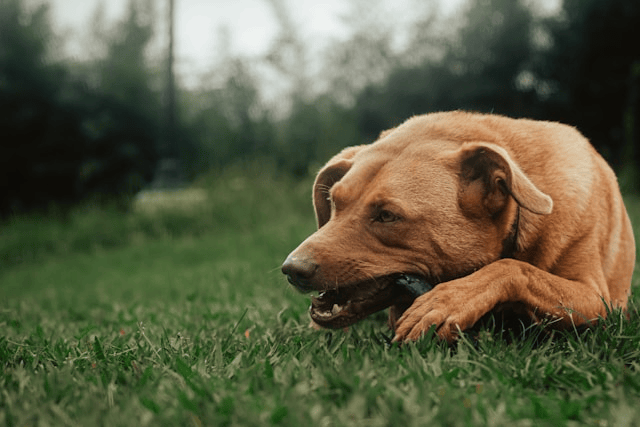Chewing is one of the most common and frustrating behavior issues dog owners face. Whether it’s shoes, furniture, electrical cords, or even walls, destructive chewing can damage your home and endanger your dog’s health. If you’re wondering how to stop a dog from chewing everything, the good news is that with a little patience, understanding, and consistent training, this behavior can be managed and often eliminated entirely.
Before diving into solutions, it’s important to understand why dogs chew in the first place.
Why Dogs Chew
Chewing is a completely natural behavior for dogs. It’s part of how they explore the world, relieve stress, and even care for their teeth. However, when the chewing becomes destructive, it usually points to an unmet need.
Here are some of the most common reasons dogs chew excessively:
1. Teething in Puppies
Just like human babies, puppies go through a teething phase. During this time, their gums can feel sore, and chewing provides relief. This phase typically lasts until they are about six months old.
2. Boredom or Lack of Stimulation
Dogs are intelligent, energetic animals. Without enough mental and physical stimulation, they often resort to chewing as a way to entertain themselves.
3. Separation Anxiety
Some dogs chew when they’re left alone because they’re anxious or stressed. This is especially common in rescue dogs or pets who have formed strong attachments to their owners.
4. Hunger or Nutritional Deficiency
If your dog isn’t getting enough food or the right kind of food they may try to chew on anything available in an attempt to satisfy that need.
5. Lack of Proper Chew Outlets
Dogs need appropriate things to chew on. Without toys or bones, they will naturally turn to household items.
The Dangers of Destructive Chewing
Uncontrolled chewing isn’t just inconvenient it can be dangerous. Dogs can swallow harmful materials like plastic or fabric, leading to choking, intestinal blockages, or poisoning. It also creates stress in the home, damages valuable property, and can strain the relationship between dog and owner.
That’s why it’s essential to learn how to stop destructive chewing in dogs before it becomes a long-term habit.
How to Stop a Dog From Chewing Everything
Now that we’ve identified the causes, let’s look at practical, proven dog training tips that help stop unwanted chewing behavior.
1. Provide Safe Chew Toys
The first step in redirecting your dog’s chewing is to make sure they have appropriate items to chew on. Offer a variety of textures and materials to keep your dog interested rubber toys, nylon bones, rope toys, and even frozen carrots can work well.
Make these toys more appealing by rotating them regularly or adding a bit of dog-safe peanut butter to a chew toy.
2. Increase Exercise and Mental Stimulation
A tired dog is a well-behaved dog. Daily walks, fetch, puzzle toys, and training games help burn off excess energy and reduce boredom-driven chewing. Dogs that are mentally and physically fulfilled are far less likely to act out destructively.
3. Use Deterrent Sprays and Barriers
Pet-safe bitter sprays are available at most pet stores and can be applied to furniture, cords, and other off-limit items. These sprays have a bitter taste that discourages chewing without harming your dog.
You can also block off access to certain rooms or use baby gates and crates to manage your dog’s environment when you’re not around.
4. Supervise and Redirect Behavior
If you catch your dog in the act of chewing something inappropriate, calmly interrupt them and redirect their attention to a chew toy. Praise them immediately when they chew the right item.
Consistency is key here. Don’t punish just redirect and reward the correct behavior. Over time, this reinforces positive habits.
5. Crate Training or Puppy-Proofing
When you can’t supervise your dog, use a crate or confined area to keep them safe. Dogs instinctively avoid soiling or destroying their sleeping space, so crates are a great tool when used correctly.
Make sure the crate is comfortable and filled with safe chew toys to keep your dog occupied.
6. Treat Separation Anxiety
If your dog is chewing out of anxiety, the solution goes deeper than just toys and deterrents. You may need to work on desensitization by leaving the house for short periods and gradually increasing the time.
Interactive toys that release treats slowly, such as puzzle feeders or KONG toys, can also help keep your dog calm while you’re away. In more serious cases, consult a dog behaviorist or veterinarian.
7. Positive Reinforcement
Dogs learn best through positive reinforcement. Reward your dog with treats, affection, or playtime when they chew appropriate items. This helps them associate good behavior with good outcomes, making them more likely to repeat it.
Avoid punishment, which can create fear and anxiety, often worsening the problem.
When to Consult a Professional
Sometimes, excessive chewing can be a symptom of a deeper behavioral or health issue. If your dog’s chewing seems compulsive or has persisted despite your efforts, it might be time to consult a certified dog trainer, veterinary behaviorist, or your vet. Conditions like pica (eating non-food items) may require medical treatment.
Conclusion
Understanding why dogs chew is the first step in addressing the problem effectively. Chewing is normal but when it becomes destructive, it’s a sign your dog’s physical or emotional needs aren’t being fully met.
By providing safe chew toys, increasing stimulation, using training techniques, and showing patience, you can stop destructive chewing in dogs and build a stronger, happier relationship with your furry friend.

